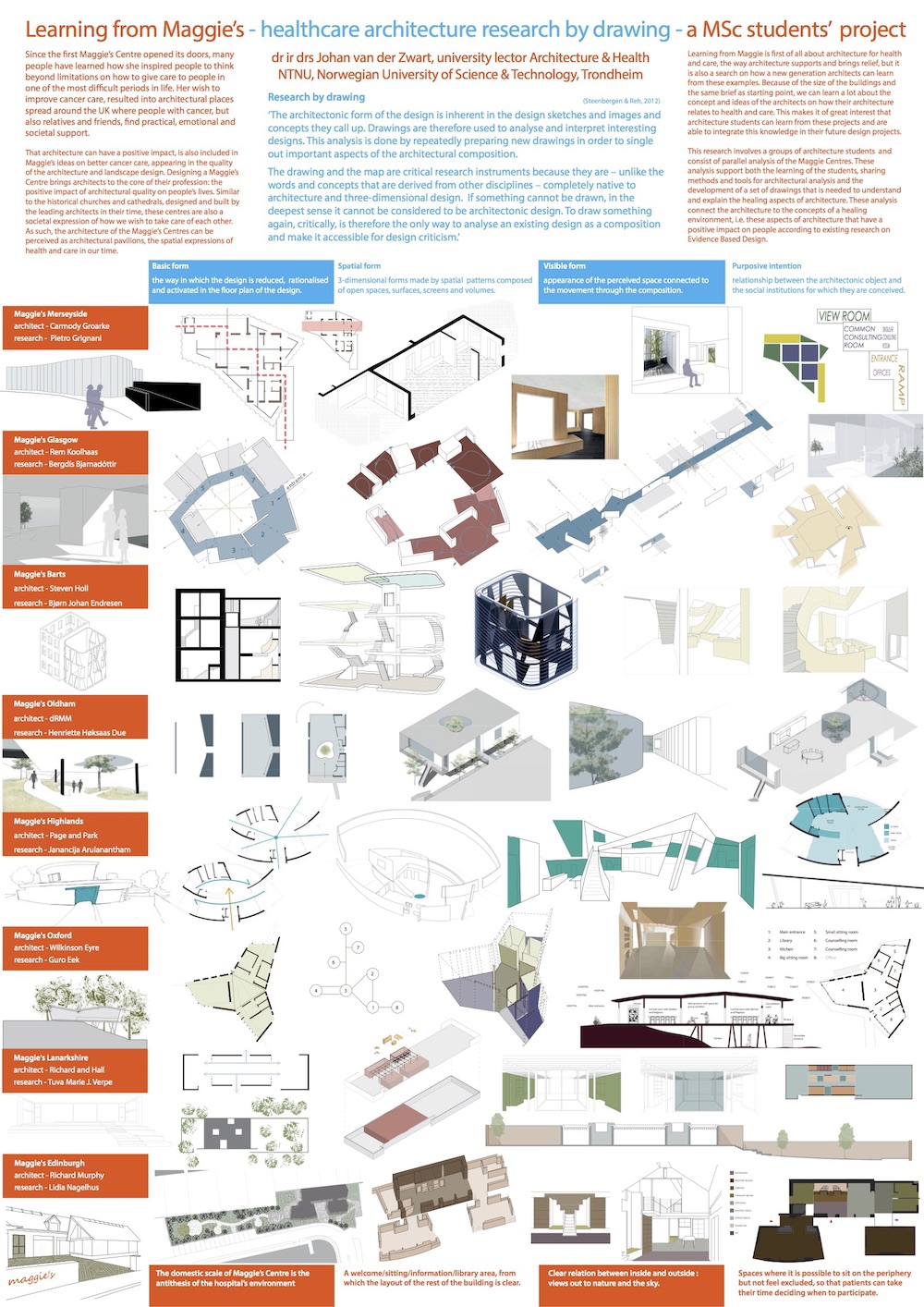Cancer care / Quality improvement
European Healthcare Design 2018
Learning from Maggie’s: healthcare architecture research by drawing, a MSc students’ project
By Johan van der Zwart | 08 Jun 2018 | 0
This research explains the architecture of the centres and positions them in architectural theory but, most of all, it shows what we can learn from Maggie’s on how architecture can give hope, comfort and support to people when it’s needed the most.
Abstract
Learning from Maggie’s: healthcare architecture research by drawing, a MSc students’ project
Since the first Maggie’s centre opened its doors, many people have learned how the founder, Maggie Keswick Jencks, inspired people to think beyond limitations on how to give care to people in one of the most difficult periods in their life. Her wish to improve cancer care manifested in architectural places spread around the UK, where people with cancer, as well as relatives and friends, can find practical, emotional and societal support.
That architecture can have a positive impact is also a principle of the Maggie’s philosophy for better cancer care. Designing a Maggie’s centre brings architects to the core of their profession: the positive impact of architectural quality on people’s lives. Similar to the historical churches and cathedrals, designed and built by the leading architects in their time, these centres are also a societal expression of how we wish to take care of each other. As such, the architecture of the Maggie’s centres can be perceived as architectural pavilions, the spatial expressions of health and care in our time.
Learning from Maggie’s is, firstly, about architecture for health and care, and the way architecture supports and brings relief. It’s also a search on how a new generation of architects can learn from these examples. Because of the size of the buildings and the fact that they are interpreting the same brief as a starting point, we can learn a lot about the concept and ideas of the architects who have designed these centres, and on how their architecture relates to health and care.
The research approach involves groups of architecture students and consists of parallel analysis of the Maggie centres. The analysis supports both the learning of the students, sharing methods and tools for architectural analysis, and the development of a set of drawings needed to understand and explain the healing aspects of architecture. The analysis connects the architecture to the concepts of a healing environment – ie, these aspects of architecture that have a positive impact on people according to existing research on evidence-based design. As such, this research explains the architecture of the centres and positions them in architectural theory but, most of all, it shows what we can learn from Maggie’s on how architecture can give hope, comfort and support to people when it’s needed the most.
Keywords: healing environment; research by drawing; architectural quality
Organisations involved

